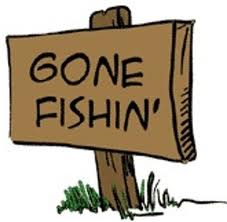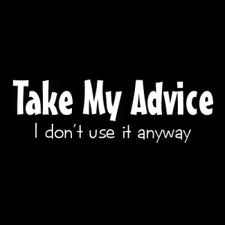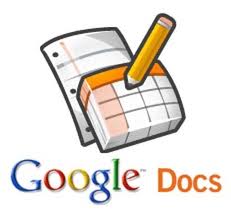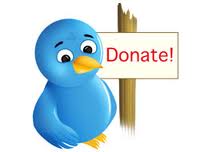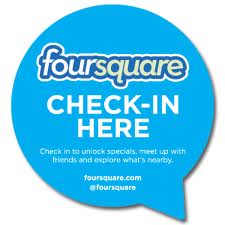 Welcome to O.D. Fridays at DonorDreams blog. Every Friday for the foreseeable future we will be looking more closely at a recent post from John Greco’s blog called “johnponders ~ about life at work, mostly” and applying his organizational development messages to the non-profit community.
Welcome to O.D. Fridays at DonorDreams blog. Every Friday for the foreseeable future we will be looking more closely at a recent post from John Greco’s blog called “johnponders ~ about life at work, mostly” and applying his organizational development messages to the non-profit community.
Today we’re focusing on a post that John titled “Kissing While Driving“. In this post, he uses an Albert Einstein quote to investigate the perils of “multitasking” in the workplace by employees. He puts forward that employees who are running back and forth between various projects are likely only doing an “adequate” job at best for their employer because as Benjamin Franklin once said, “Haste makes waste”. More importantly John concludes:
- this likely impacts employee engagement and loyalty,
- can be dangerous for the company whose reputation is based on quality, and
- is less than satisfying for employees who take pride in their work.
 Reading John’s post brought me back to my “frontline” days of non-profit work. I honestly think this blog post is even more applicable to non-profit agencies because of how they behave in “resource deprived” environments. When I was the executive director of my local Boys & Girls Club, I used to laugh when people asked me: “What is your job?”
Reading John’s post brought me back to my “frontline” days of non-profit work. I honestly think this blog post is even more applicable to non-profit agencies because of how they behave in “resource deprived” environments. When I was the executive director of my local Boys & Girls Club, I used to laugh when people asked me: “What is your job?”
I used to describe my work as a daily “sprint” through a series of very diverse and challenging situations.
- 7:00 am — network with donors at Rotary Club
- 8:30 am — meet with development director about an upcoming special event fundraiser
- 9:30 am — prepare meeting materials for upcoming Finance Committee meeting
- 10:00 am — meet with program staff about a recent hiccup that was brought to my attention by a parent or collaborative partner
- 11:00 am — double-check the bank deposit against the donor database report and check log; go to bank and make the deposit
- 11:30 am — Troubleshoot a tech problem that an employee was experiencing (and was preventing them from doing their job)
- Noon — Go to lunch with a donor or board member
- 1:30 pm — Hop on a conference call for the state alliance
- 2:30 pm — Last minute prep for the board development committee meeting
- 3:00 pm — Attend the board development committee meeting
- 5:00 pm — Walk through the clubhouse facility to see programs in action and catch staff doing “good things” as well as connect with the mission
- 5:30 pm — Respond to email and catch up on stuff that washed into my office throughout the day (possibly screening some cover letters and resumes for a job vacancy)
- 6:00 pm — Pull together some paperwork and process grant receivables
- 7:00 pm — Prep for the next day, do a little planning, or take advantage of the silence in the office and write a few sections for a grant application or upcoming newsletter
- 8:00 or 9:00 pm — Go home for some sleep so you can do it all over again tomorrow.
 While every day wasn’t always like this, most days were this way. It is the cross that a non-profit executive director must bear when they operate in a resource deprived environment. It is exhausting, and it produces a situation where many mistakes are made. It is a minor miracle anything got done and that any progress was made. In the end, it was one of the top three reasons I chose to leave the frontline and go to work for the national organization.
While every day wasn’t always like this, most days were this way. It is the cross that a non-profit executive director must bear when they operate in a resource deprived environment. It is exhausting, and it produces a situation where many mistakes are made. It is a minor miracle anything got done and that any progress was made. In the end, it was one of the top three reasons I chose to leave the frontline and go to work for the national organization.
Hmmmmm . . . yes, I’d say it was a lot like “kissing while driving”. I wasn’t very satisfied. I wasn’t as engaged in the things that were most important to the agency. I made mistakes and felt horrible about making them. I ultimately left for what I thought were greener pastures.
In hindsight, I wonder what I could’ve done differently:
- invested in a volunteer program to expand human resources
- engaged board members and donors in seeing and help solving these challenges (rather than celebrating the insanity)
- adjusted the agency’s strategic plan to focus less on growth and more on deepening the impact
Of these three ideas, the one I think might bring the highest return on investment is the second bullet point that speaks to engaging board members and donors. As I look around at all of my non-profit friends, I see too many of them placating their boards by always saying “YES” rather than walking them through “cause-and-effect” scenarios pertaining to board room decisions (e.g. budget, staffing structure, new programming, etc). I also see many of them telling donors whatever they think they want to hear just to get another signed pledge card.
I have a hard time believing that if board members and donors saw what your day REALLY looked like that they wouldn’t want to jump in and help solve those challenges. Right? And with multiple people focused on solving these challenges, I suspect the odds go up dramatically that either the car gets stopped so the kissing can continue OR the kissing stops so that some work can get done.
In the end, it is your leadership that will solve this problem. Perhaps, it is a new Teachable Point of View that you adopt as the leader. Or maybe it is your embrace of tools like GRPI or RASI. Regardless, it most likely starts and ends with you. So, what are you going to do about it?
Are your days as crazy as the one I described above? What tools do you use to tame that beast? Have you ever engaged board members or donors in this discussion? If so, what were the results? Please use the comment box below to weigh-in with your thoughts. Remember to also check out other blog posts on organizational development by John Greco at his blog johnponders ~ about life at work, mostly.
Here’s to your health!
Erik Anderson
Founder & President, The Healthy Non-Profit LLC
www.thehealthynonprofit.com
erik@thehealthynonprofit.com
http://twitter.com/#!/eanderson847
http://www.facebook.com/eanderson847
http://www.linkedin.com/in/erikanderson847





